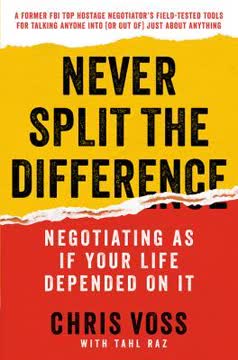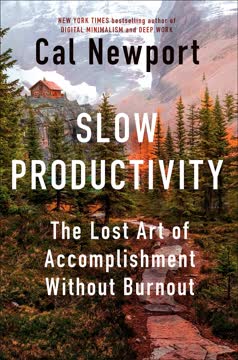Key Takeaways
1. Shift your mindset to coach effectively and foster growth
Low expectations rarely yield growth and often lead to frustration on both sides.
Embrace a growth mindset. As a manager, your role is to empower and motivate your employees to reach their full potential. This requires shifting from a fixed mindset, which assumes abilities are predetermined, to a growth mindset that believes skills can be developed through effort and learning.
- Key aspects of a growth mindset:
- Focus on effort and strategies, not just outcomes
- View challenges as opportunities for learning
- Encourage risk-taking and learning from failures
- Praise progress and improvement, not just innate talent
By adopting this perspective, you create an environment where employees feel supported in their development and are more likely to take on new challenges. Remember, your own growth as a coach is part of this process – be open to learning and adjusting your approach as you gain experience.
2. Set the stage for peak performance through strategic selection and connection
Challenging a person in an area where she is skilled makes her brain grow, much like a muscle.
Align tasks with strengths and values. To achieve peak performance, help employees select tasks that:
- They are good at
- They enjoy doing
- Add value to the organization
This intersection creates the ideal conditions for excellence and growth. Additionally, foster strong connections between team members and to the organization's mission.
- Strategies for building connection:
- Encourage face-to-face interactions
- Create opportunities for collaborative problem-solving
- Share stories that reinforce company values and purpose
- Celebrate team and individual successes
By strategically aligning tasks with strengths and fostering a sense of connection, you create an environment where employees are motivated to perform at their best and continuously improve.
3. Build trust through active listening and transparent communication
Without trust, employees won't level with you; at best, you'll learn either untruths or partial truths about how they see themselves and their roles within the organization.
Prioritize relationship-building. Trust is the foundation of effective coaching. To build trust, focus on active listening and transparent communication. Make a conscious effort to understand your employees' perspectives, goals, and concerns.
- Active listening techniques:
- Give your full attention during conversations
- Ask open-ended questions to encourage sharing
- Paraphrase and summarize to ensure understanding
- Acknowledge emotions and non-verbal cues
Be transparent about your intentions, expectations, and the coaching process itself. Share your own experiences and vulnerabilities when appropriate. Consistently follow through on commitments and promises to demonstrate your reliability. By investing in trust-building, you create a safe space for open dialogue and meaningful development.
4. Structure coaching sessions for maximum impact and engagement
Coaching sessions are conversations between you and your employee in which you identify areas for growth, create development plans, perform exercises, and check in on progress.
Design purposeful conversations. Effective coaching sessions require careful planning and structure. Begin by agreeing on clear outcomes for the session. Then, follow a framework that includes:
- Building a baseline understanding of the issues
- Holding up the mirror to increase self-awareness
- Reframing situations to provide new perspectives
- Practicing new skills or behaviors
- Ensuring actionable next steps
Throughout the session, ask thought-provoking questions that encourage self-reflection and problem-solving. Avoid the temptation to simply provide answers or solutions. Instead, guide your employee to discover insights and develop their own strategies for improvement.
- Key questions to ask during coaching sessions:
- "What's working well? What isn't?"
- "How would you describe the impact you're having?"
- "What alternative approaches could you consider?"
- "What support do you need to move forward?"
By structuring your coaching conversations effectively, you maximize their impact and empower your employees to take ownership of their development.
5. Provide feedback that sticks by managing emotions and staying fair
When people are in the grip of a threat response, they're less capable of absorbing and applying feedback.
Create a receptive environment. Effective feedback is crucial for growth, but it can often trigger defensive reactions. To ensure your feedback is heard and applied, focus on managing emotions and maintaining fairness.
- Strategies for delivering impactful feedback:
- Build a foundation of trust and positive interactions over time
- Choose the right time and place for feedback conversations
- Start with open-ended questions to understand the employee's perspective
- Focus on specific behaviors and their impact, not personal characteristics
- Balance constructive criticism with genuine appreciation
- Stay on "your side of the net" by describing your observations and feelings, not assuming motives
Remember that emotions play a vital role in learning and motivation. Express enough emotion to engage the employee, but not so much that you provoke defensiveness. By creating a safe and fair environment for feedback, you increase the likelihood that your insights will be internalized and acted upon.
6. Tailor your coaching approach to different learning styles and personalities
Knowing how people like to learn will accelerate their overall development—but using only their preferred styles won't help them tackle every challenge they face.
Customize your coaching. Recognize that employees have different learning preferences and adapt your approach accordingly. The Experiential Learning Cycle identifies four main learning styles:
- Experiencing (feeling and relationships)
- Reflecting (observing and thinking)
- Analyzing (integrating ideas and planning)
- Acting (hands-on experimenting)
Identify your employees' preferred styles through observation and conversation. Then, tailor your coaching methods to match their preferences while also encouraging them to develop flexibility in other styles.
- Coaching strategies for different learning styles:
- Experiencing: Focus on building personal connections and emotional engagement
- Reflecting: Provide time for observation and thoughtful analysis
- Analyzing: Offer conceptual models and data-driven insights
- Acting: Encourage hands-on experimentation and real-world application
By customizing your approach, you'll accelerate learning and development while also helping employees become more well-rounded in their problem-solving and growth strategies.
7. Coach for emotional maturity to develop well-rounded leaders
Putting these unseasoned managers into positions of authority too quickly robs them of the opportunity to develop the emotional competencies that come with time and experience.
Prioritize emotional intelligence. Technical skills and raw talent are important, but emotional maturity is crucial for long-term leadership success. Coach your high-potential employees to develop key emotional competencies such as:
- Self-awareness
- Empathy
- Emotional regulation
- Conflict resolution
- Relationship-building
Resist the temptation to promote talented individuals too quickly based solely on their technical abilities. Instead, create opportunities for them to develop emotional skills through:
- Cross-functional assignments that require collaboration
- Mentoring relationships with seasoned leaders
- Challenging projects that push them out of their comfort zones
- Regular feedback and self-reflection exercises
By focusing on emotional maturity alongside technical skills, you'll develop more well-rounded leaders who can navigate complex interpersonal dynamics and drive organizational success.
8. Leverage team coaching to enhance collective performance
Coaching is about helping your team member reach her own potential.
Foster team synergy. While individual coaching is important, team coaching can significantly enhance collective performance. Focus on three key aspects of group interaction:
- Effort: Motivate the team to apply their collective energy effectively
- Strategy: Help the team develop appropriate approaches to their work
- Knowledge and skill: Facilitate the sharing and development of expertise
Time your team coaching interventions strategically:
- Beginnings: Focus on building engagement and commitment
- Midpoints: Reflect on and refine performance strategies
- Endings: Encourage learning and knowledge transfer
By coaching at both the individual and team levels, you create a culture of continuous improvement and collaboration that drives overall organizational success.
Last updated:
FAQ
What's "HBR Guide to Coaching Employees" about?
- Purpose of the Guide: The book is designed to help managers effectively coach their employees, enhancing their skills and fostering independence. It emphasizes the importance of coaching in improving productivity and creativity.
- Content Overview: It provides practical tools and strategies for managers to engage with their employees, set growth goals, and measure progress. The guide covers various aspects of coaching, from preparing to coach to customizing approaches based on individual learning styles.
- Target Audience: The guide is aimed at managers and leaders who want to improve their coaching skills and better support their teams in achieving peak performance.
Why should I read "HBR Guide to Coaching Employees"?
- Enhance Leadership Skills: The guide offers insights into how coaching can transform leadership styles, making managers more effective in their roles.
- Boost Employee Development: It provides strategies to help employees grow, which can lead to increased productivity and job satisfaction.
- Practical Tools and Techniques: Readers will gain access to actionable advice and methods that can be immediately applied in the workplace to improve coaching interactions.
What are the key takeaways of "HBR Guide to Coaching Employees"?
- Importance of Coaching: Coaching is essential for developing employees' skills and fostering a productive and creative work environment.
- Customized Approaches: Tailoring coaching methods to individual learning styles can significantly enhance the effectiveness of coaching.
- Building Trust and Engagement: Establishing trust and engaging employees in their development process are crucial for successful coaching outcomes.
How does "HBR Guide to Coaching Employees" define coaching?
- Asking Questions: Coaching is primarily about asking questions that help employees discover the answers that are right for them.
- Management Style: It is a management style characterized by guiding employees to fulfill their responsibilities more effectively and advance their professional development.
- Empowerment Focus: The emphasis is on empowering employees to find solutions and grow, rather than simply providing them with answers.
What are the benefits of coaching according to "HBR Guide to Coaching Employees"?
- Increased Productivity: Coaching helps employees become more independent and capable, reducing the need for constant supervision.
- Enhanced Creativity: By encouraging employees to find their own solutions, coaching fosters a more innovative work environment.
- Long-term Development: Investing in coaching leads to sustained employee growth and development, benefiting both individuals and the organization.
What is the "growth mind-set" mentioned in "HBR Guide to Coaching Employees"?
- Definition: A growth mind-set is the belief that abilities and intelligence can be developed through dedication and hard work.
- Impact on Performance: Employees with a growth mind-set are more open to learning, resilient in the face of setbacks, and receptive to feedback.
- Encouraging Growth: Managers can foster a growth mind-set by focusing feedback on effort and determination rather than inherent abilities.
How does "HBR Guide to Coaching Employees" suggest building trust with employees?
- Listening and Engagement: Building trust starts with actively listening to employees and engaging with their concerns and aspirations.
- Consistency and Follow-through: Consistently following through on promises and being transparent in communication helps establish trust.
- Recognition and Support: Acknowledging employees' contributions and providing support for their development fosters a trusting relationship.
What are the common coaching mistakes highlighted in "HBR Guide to Coaching Employees"?
- Coaching the "Mini-Me": Avoid trying to mold employees into replicas of yourself; focus on their unique strengths and goals.
- Waiting for Special Time: Don't wait for perfect moments to coach; integrate coaching into everyday interactions.
- Impatience: Be patient with employees' development processes and avoid taking over tasks that they should be learning to handle.
How can managers tailor their coaching to different learning styles according to "HBR Guide to Coaching Employees"?
- Identify Learning Preferences: Understand whether employees prefer learning through experience, reflection, analysis, or action.
- Adapt Coaching Methods: Use communication and coaching techniques that align with each employee's preferred learning style.
- Encourage Flexibility: While respecting preferences, encourage employees to try new learning styles to tackle different challenges.
What role does feedback play in "HBR Guide to Coaching Employees"?
- Constructive Feedback: Feedback should be specific, actionable, and focused on behaviors rather than personal attributes.
- Regular and Timely: Providing feedback regularly and in a timely manner helps reinforce positive behaviors and correct issues promptly.
- Balanced Approach: Balance positive feedback with constructive criticism to maintain motivation and encourage improvement.
How does "HBR Guide to Coaching Employees" suggest managing emotions during coaching?
- Express Emotions Appropriately: Use emotions to convey emphasis and values, but avoid overwhelming employees with excessive emotional expression.
- Balance is Key: Find the right balance of emotion to engage employees without triggering defensive reactions.
- Practice and Calibration: Regular practice and reflection on emotional expression can help managers fine-tune their approach.
What are the best quotes from "HBR Guide to Coaching Employees" and what do they mean?
- "Coaching is leading." This quote emphasizes that effective leadership involves guiding and empowering employees rather than simply directing them.
- "Ask more than you tell." It highlights the importance of asking questions to encourage employees to think critically and develop their own solutions.
- "You’ll tap your employees’ full potential while leading more strategically." This underscores the long-term benefits of coaching in unlocking employees' capabilities and enhancing overall leadership effectiveness.
Review Summary
"HBR Guide to Coaching Employees" receives mostly positive reviews, with an average rating of 3.89 out of 5. Readers appreciate its insightful ideas and techniques for effective coaching, praising its concise format and practical advice. Some find it eye-opening for new managers, while others consider it a useful reference for experienced executives. However, a few reviewers criticize the book for being too academic, disjointed, or lacking revolutionary content. Overall, most readers find value in the guide's approach to employee coaching and leadership development.
Similar Books










Download PDF
Download EPUB
.epub digital book format is ideal for reading ebooks on phones, tablets, and e-readers.













